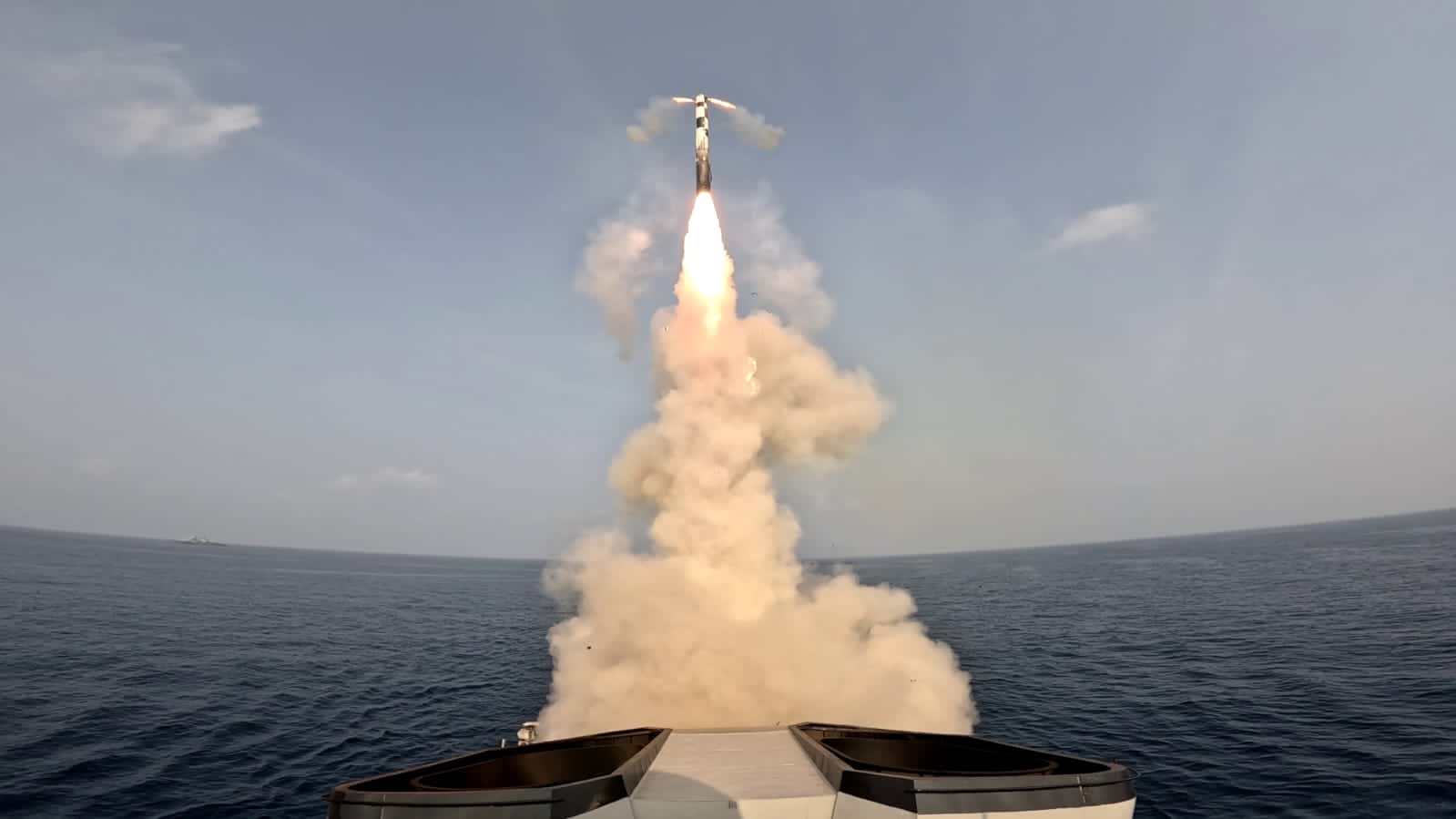In the last month, both India and China have displayed their hypersonic weaponry. While New Delhi tested its first long-range hypersonic missile, Beijing unraveled the design of an advanced weapon in the category.
But, the most spectacular has been the successful test of a powerful boron ramjet engine that can power hypersonic weapons to fly through the air and glide through water.
The powerful engine can carry weapons at high speeds through air and water. The engine has demonstrated 90 percent efficiency in laboratory tests conducted in submarine mode and is ready for practical use.
Considering its air-breathing ramjet engine, it will give tough competition to India-made BrahMos in the region. The EurAsian Times decided to compare whether the technology helps China get a step ahead of India, whose indigenous missile program has been one of the country’s successful projects, or if the Boron-powered missile will come with its own limitations.
The two countries have been locked in an arms race that has heated up following the Galwan clashes in 2020.
The successful test of the boron-powered propulsion system came two years after its blueprint was unveiled. Chinese scientists now claim to have successfully developed the “dream engine” that could revolutionize modern warfare.
Initially conceived for hypersonic weapons, the engine has now undergone modifications to operate across multiple environments—flying through the air and diving into the sea to reach targets at incredibly high speeds and over extended distances.

The breakthrough engine works by inhaling air and water as oxidizing agents, a design that enables its dual functionality. The technology is hailed for its transformative potential of powering cross-medium vehicles.
Advanced weapons powered by the system could fly at supersonic speeds for hundreds of kilometers in the air before diving into the water to strike high-value targets such as aircraft carriers, all at speeds exceeding 200 knots.
“For high-speed weapons, boron powered missile is a conducive option. They have high gravimetric and volumetric heat of combustion. Enabling them to travel faster and for longer distances. I am doubtful how far boron powered missiles can be credible undersea,” Indian scholar on nuclear missiles, missile defense, and artillery Debalina Ghoshal, author of ‘Role of Ballistic and Cruise Missiles in International Security’ told the EurAsian Times.
Ghoshal feels that with boron-powered missiles there is the dilemma of “use them or lose them”. “Naval operations of the boron-powered missile could become a complex task for China as opposed to Brahmos (not boron-powered). But now technical improvements are being made to improve the overall efficiency of the engine,” Ghoshal said while adding: “So, it is very difficult to say the difference like that would be disadvantageous as Beijing is making improvements that in the past seemed to be limitations.”
So far, for India, BrahMos has been the ‘Brahmastra’ (the ultimate celestial weapon) known for its speed and accuracy. BrahMos is technically a ramjet-powered supersonic cruise missile with a solid propellant booster that can be launched from land-based canisters, submarines, ships, and now aircraft. It travels at speeds of Mach 2.8 to 3.0 but is being upgraded to travel faster than Mach 5.0 for the hypersonic variant.
One of its special features is its ability to fly extremely close to the ground to avoid missile defense systems. In fact, during the terminal phase, the missile can fly as low as 10 meters to the ground. In the final phase, the missile relies on active radar seeker or inertial guidance.
The missile’s reputation and performance have been the reasons for the Philippines to choose it to defend its coastline from Chinese aggression.
Scramjet Versus Ramjet
While both the Chinese boron-fueled propulsion system and the liquid-fueled propulsion system are air-breathing systems, the difference is in the fuel.
Boron, a lightweight element used in scramjet engines, is known for its supersonic combustion. Boron’s unique properties make it ideal for such high-speed, high-efficiency engines capable of pushing the limits of modern weaponry.
When boron comes into contact with oxygen in the air, it ignites with remarkable intensity, rapidly propelling a missile to speeds surpassing five times the speed of sound. The main difficulty has been igniting boron underwater, a challenge Chinese scientists overcame. To solve this, the team created a new design that allowed the fuel to burn more effectively, improving the engine’s efficiency.
They also adjusted the amount of water vapor injected into the combustion chamber and fine-tuned the mix of other ingredients, like magnesium and aluminum. These changes helped the boron burn more completely in the vapor.
Ramjets are air-breathing engines that can operate efficiently at supersonic speeds. Unlike turbojets and turbofans, which rely on rotating blades to compress air, ramjets use the aircraft’s high-speed forward motion to compress incoming air.
Once compressed, air enters the combustion chamber, where fuel is injected and ignited. The burning fuel rapidly expands, creating a high-velocity exhaust jet that propels the aircraft forward. However, ramjets have a limitation – they cannot operate efficiently at speeds below Mach 2.




